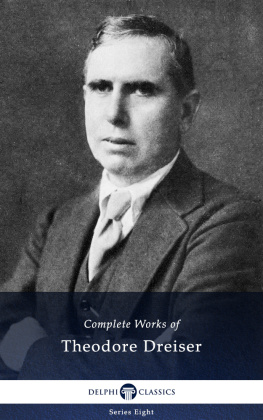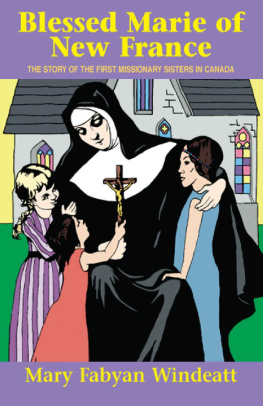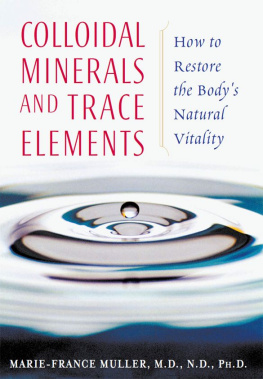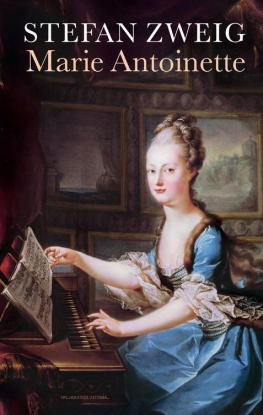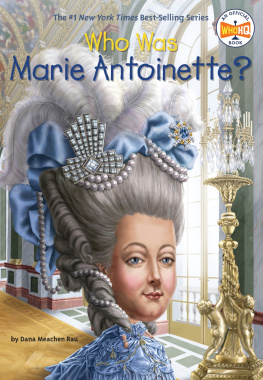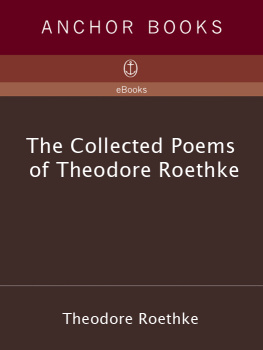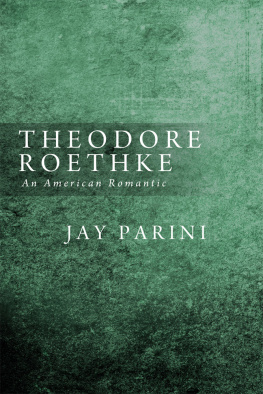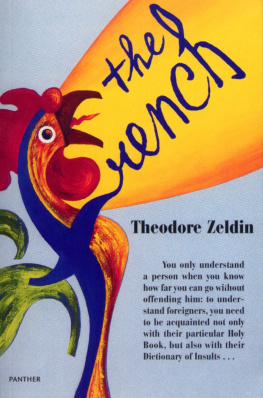Evergates Theodore - Marie of France
Here you can read online Evergates Theodore - Marie of France full text of the book (entire story) in english for free. Download pdf and epub, get meaning, cover and reviews about this ebook. year: 2019, publisher: University of Pennsylvania Press, genre: Non-fiction. Description of the work, (preface) as well as reviews are available. Best literature library LitArk.com created for fans of good reading and offers a wide selection of genres:
Romance novel
Science fiction
Adventure
Detective
Science
History
Home and family
Prose
Art
Politics
Computer
Non-fiction
Religion
Business
Children
Humor
Choose a favorite category and find really read worthwhile books. Enjoy immersion in the world of imagination, feel the emotions of the characters or learn something new for yourself, make an fascinating discovery.

- Book:Marie of France
- Author:
- Publisher:University of Pennsylvania Press
- Genre:
- Year:2019
- Rating:4 / 5
- Favourites:Add to favourites
- Your mark:
- 80
- 1
- 2
- 3
- 4
- 5
Marie of France: summary, description and annotation
We offer to read an annotation, description, summary or preface (depends on what the author of the book "Marie of France" wrote himself). If you haven't found the necessary information about the book — write in the comments, we will try to find it.
Marie of France — read online for free the complete book (whole text) full work
Below is the text of the book, divided by pages. System saving the place of the last page read, allows you to conveniently read the book "Marie of France" online for free, without having to search again every time where you left off. Put a bookmark, and you can go to the page where you finished reading at any time.
Font size:
Interval:
Bookmark:
Marie of France
THE MIDDLE AGES SERIES
Ruth Mazo Karras, Series Editor
Edward Peters, Founding Editor
A complete list of books in the series
is available from the publisher.

Countess of Champagne, 11451198
Theodore Evergates

Copyright 2019 University of Pennsylvania Press
All rights reserved. Except for brief quotations used for
purposes of review or scholarly citation, none of this book
may be reproduced in any form by any means without
written permission from the publisher.
Published by
University of Pennsylvania Press
Philadelphia, Pennsylvania 19104-4112
www.upenn.edu/pennpress
Printed in the United States of America on acid-free paper
1 3 5 7 9 10 8 6 4 2
Library of Congress Cataloging-in-Publication Data
Names: Evergates, Theodore, author.
Title: Marie of France : Countess of Champagne, 11451198 / Theodore Evergates.
Other titles: Middle Ages series.
Description: 1st edition. | Philadelphia : University of Pennsylvania Press, [2019] | Series: Middle Ages series | Includes bibliographical references and index.
Identifiers: LCCN 2018019187 | ISBN 978-0-8122-5077-0 (hardcover : alk. paper)
Subjects: LCSH: Marie, de Champagne, 11451198. | CountessesFranceChampagne-ArdenneBiography. | Champagne-Ardenne (France)HistoryTo 1500.
Classification: LCC DC89.7.M37 E94 2019 | DDC 944/.31021092 [B]dc23
LC record available at https://lccn.loc.gov/2018019187


Countess Marie of Champagne is known today primarily as a literary patron, notably of Chrtien de Troyes, who famously announced in his prologue to Lancelot, that since she wished him to tell the tale, he complied with her command. From that and several other mentions by contemporary writers, Marie has been cast as the animator of a court of Champagne. It is indeed ironic that, with few explicit references to her patronage, Marie is now cited more frequently than her husband, Count Henry the Liberal (115281), a commanding figure in his time who made the county of Champagne one of the premier principalities of northern France and whose intellectual interests are amply attested. Marie in fact was more than a cultural patron. She was ruling countess of Champagne for almost two decades in the 1180s and 1190s, initially during Count Henrys absence overseas, then as regent for her son Henry II and as co-lord with him during the Third Crusade and his subsequent residence in Acre. From the age of thirty-four until her death at fifty-three she ruled almost continuously, presiding at the High Court of Champagne and attending to the many practical matters arising in a vibrant principality of the late twelfth century. She acted with the advice of her court officers but without limitation by either the king or a regency council. If Henry the Liberals crowning achievement was to create the county of Champagne as a dynamic, prosperous state, Maries was to preserve it in the face of several existential threats.
Historians of Capetian France have yet to appreciate the frequency and significance of wives acting in the absence of their husbands and during the minority of inheriting sons. That was a common family practice; only in a wifes absence was a guardian or regency council appointed. During Countess Maries lifetime two royal regencies were necessitated by the absence of a resident queen while the king traveled overseas: when her mother, Eleanor of Aquitaine, accompanied Louis VII on the Second Crusade, and when Queen Isabelle died in childbirth shortly before Philip II left on the Third Crusade. Her decisions at court and her letters patent carried the same authority as those of her husband and son, without mention of any provisional standing. Although she often associated her underage son with her in letters patent, she alone exercised the full plenitude of the comital office, even during Count Henry IIs extended stay in Palestine, and she sealed in her own name as countess of Troyes (her only title).
Maries life beyond her role as literary patron and ruling countess encompassed an extensive network of family relationships, for she was connected by birth and marriage to two of the most prominent royal families of twelfth-century Europe. As the daughter of Louis VII and Eleanor of Aquitaine, Marie acquired through their second marriages numerous royal half-siblings whom she regarded as brothers and sisters: Louiss children Margaret of France and King Philip II, and Eleanors sons Henry, Geoffroy, and Richard. Even more directly important in providing a nexus of personal support for her rule in Champagne were Henry the Liberals well-placed siblings: the royal seneschal Count Thibaut V of Blois (115291), Archbishop William of Sens and Reims (11681202), and Queen Adele (116079, d. 1206). Maries seal inscribed her dual identity: Daughter of the King of the Franks, Countess of Troyes.
We know very little about Marie before her cohabitation with Count Henry, and little thereafter during their sixteen-year marriage. Only during the 1180s and 1190s do we get to know her as regent and co-lord of Champagne, primarily through her letters patent. Beyond those chancery-produced records and brief mentions by chroniclers, prelates, and poets, there is scant documentary evidence for recovering a rounded picture of her life and works. This study is consequentially highly contextual in that it situates Marie within her extended families, regional institutions, and the contingent events that influenced her life from the very beginning. Had Bernard of Clairvaux not objected, she might have been betrothed shortly after her birth to Henry of Anjou. As it was, seven years later her mother, Eleanor, married the young

Map 1. Northern France in the late twelfth century.

On 11 June 1144 the newly reconstructed abbey church of St-Denis, just outside Paris, was dedicated with great fanfare. In his memoirs Abbot Suger names a few of the important lay and religious leaders of northern France he had invited to attended the ceremonies: five archbishops (Reims, Sens, Rouen, Bordeaux, Canterbury), thirteen bishops, and many prominent laymen, including the two most consequential personages of northern France, King Louis VII and his nemesis, Count Thibaut of Blois. On display were Sugers abundant works in the church remodeled in the architectural style now known as Gothic: a luxurious great gold cross, stone carvings and life-size portal sculptures, stained glass panels, and magnificent bronze doors, not to mention the rebuilt monastic compound. Between 1137 and 1144 an army of craftsmen had labored on what was to be a monument to the abbot, whose image or name was inscribed on virtually every object.
A high point of the occasion was the presentation of gifts on the new altar of St-Denis. As Suger described it, the bishops laid their pontifical rings as offerings on the altar while the laymen presented precious stonesemeralds from King Louis VII, hyacinths and rubies from Count Thibaut, and pearls from the other
Next pageFont size:
Interval:
Bookmark:
Similar books «Marie of France»
Look at similar books to Marie of France. We have selected literature similar in name and meaning in the hope of providing readers with more options to find new, interesting, not yet read works.
Discussion, reviews of the book Marie of France and just readers' own opinions. Leave your comments, write what you think about the work, its meaning or the main characters. Specify what exactly you liked and what you didn't like, and why you think so.


